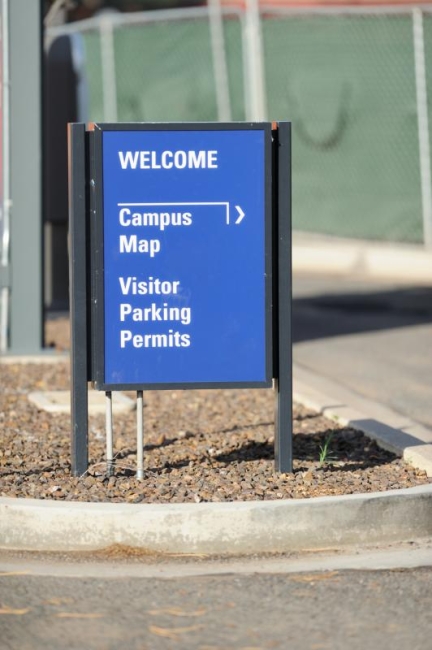You have /5 articles left.
Sign up for a free account or log in.

Shepard/istock/getty images plus
For job candidates, the experience of being invited for campus interviews is both exhilarating and nerve-racking. The competition is strong and the stakes are high. How can we make the campus visit no more stressful than it already is?
I recently was on the tenure-track job market and have been reflecting on my experiences navigating different campus visits and onboarding processes. Drawing on such experiences and those of various colleagues, I’d like to share some ideas for how we can make the campus visit and onboarding processes of new tenure-track faculty more humane. Here are 11 suggestions for improvements.
- Avoid tight deadlines. One university, for example, asked me to prepare for an entire virtual campus visit within four days with no prior communication. That short timeline created barriers for me as a disabled scholar and added even greater anxiety to the process. During this pandemic, families -- and especially women -- may experience significant challenges facing such tight deadlines.
- Send a detailed itinerary to the candidate in advance. Make sure to include the names, titles and email addresses of everyone with whom a candidate will interact. That allows job candidates to research in advance members of the hiring committees and other people they’ll meet.
- Connect with candidates before their visits. One hiring committee chair called me the afternoon before a virtual visit to go over the schedule and the plan for the day. I had an opportunity to ask initial questions and raise any last-minute concerns.
- Money matters. Speedy reimbursements for expenses are vital. Don’t assume that candidates have good credit lines or disposable income, especially given the amount of student debt that some have accumulated after years of living below the poverty line. I know colleagues who have almost maxed out their credit cards by booking flights and hotels to participate in campus interviews. If reimbursement takes too long, it can put such candidates in a precarious position. Don’t let that happen to your interviewees.
- Treat candidates as human beings with human needs. When picking up the candidate at the hotel, hand them a water bottle and tell them to let you know when they need another one. Advise them about nearby washrooms, including accessible and gender-neutral ones. Such little things matter.
- Communicate expectations. For example, make wardrobe expectations clear in advance. Also, if the weather turns to be hot, let the candidate know they can take off a jacket, sweater or suit coat. If everyone on campus wears casual clothes, why must candidates be dressed formally? As a colleague once noted, “This ain’t a fashion show!”
- Keep interviewers on time. If someone is late for their interview with the candidate, it can have a domino effect and push the entire schedule back. It can be highly stressful for a candidate to arrive late for the next appointment, even if it is not their fault. It also decreases their time with that next person.
- Recognize the importance of breaks. Build 15- to 20-minute breaks into the itinerary so the candidate can catch their breath, take notes and relax. Schedule time to go over the tech setup. Space out intensive requirements -- research talks, interviews, teaching demonstrations and the like.
- Give candidates multiple opportunities to ask questions. This is one of the best ways to get acquainted with those candidates. Remember, too, that the interview is also about candidates figuring out if the department and university are a good fit for them, so the interview process should be one of mutual exploration. This way of empowering candidates should go beyond the token five minutes at the end of an hour of questions.
- Humanize the entire hiring process. Introduce candidates to the administrative team who organized the campus visit -- those doing the “behind the curtains” work and “running the show.”
- Be transparent and timely about decisions. Most important, as all my colleagues have passionately mentioned, the hiring process should be as transparent and speedy as possible. Candidates have invested a lot of time and energy in the campus visit and interviews. In addition, they have contributed to the culture of the institution by sharing their research and teaching with colleagues and students. Hiring committees should have at least a tentative timetable and aim to communicate decisions to candidates promptly. This includes when you decide to reject a candidate. Always pursue humane ways of doing so, especially when it comes to a campus visit that doesn’t turn into a job. Notify them as soon as possible with a personalized email that shows an appreciation for their work instead of letting them discover the search outcomes through Twitter.
Diversifying the Pool
As a queer and disabled scholar of color, I can’t avoid the topic of equity in this context. If departments actually want to move beyond a privileged pool of applicants, they must make efforts to do so early in the hiring process. To diversify applicant pools, you can’t just sit down, receive a pile of applications and see what you’ve got. The work needs to be done beforehand.
For example, some colleagues have contacted departments and emailed professors, saying, “We’d love to meet some of your students. Here’s recruitment info; please pass it on.” Or they ask, “Who in your network is finishing their doctoral studies who would fit really well with this position? Here’s the job ad.” In that way, you can become more proactive and move beyond simply waiting to see who reads the job posting.
Diversifying the candidate pool also involves creating a safe(r) space -- one in which accessibility needs are taken seriously, candidates have the opportunity to learn about the resources and communities available on the campus, and people feel supported by chairs who understand the extra forms of labor that faculty of color, LGBTQ2S+ faculty and disabled scholars frequently perform.
Onboarding
In my experience, I felt immediately welcomed and looked after in my new department. For example, compared to colleagues who simply received a welcome email from their departments, I was greeted with posts on social media that introduced me and my research interests. In addition, I was included in the graduation celebration with faculty and students. I was even surprised with flowers and a warm welcome note at my home.
I had to move to a new area for the job, and I was amazed at colleagues in the department who took the time to write a brief guide to all the different neighborhoods in the city along with suggestions for restaurants. In addition, even though a campus tour wasn’t possible due to the pandemic, the administrative assistant in my program shared videos and photos of the building from their mobile phone with me. That way, without even stepping onto the campus, I already had a sense of the main highlights.
I am grateful to have a team of administrative assistants who reached out to me explaining how to order books for the fall, jump through hoops in hiring research assistants and follow other laborious processes that new professors must navigate. I could also count on the support of a handpicked mentorship committee that genuinely wanted to get to know me and help me succeed as an early-career scholar.
It is sometimes about small gestures that genuinely make a difference. I recognize the time invested in these practices by already-overworked faculty members and administrative assistants. On my end, at least, I am committed to giving back by supporting my future colleagues in similar ways.








